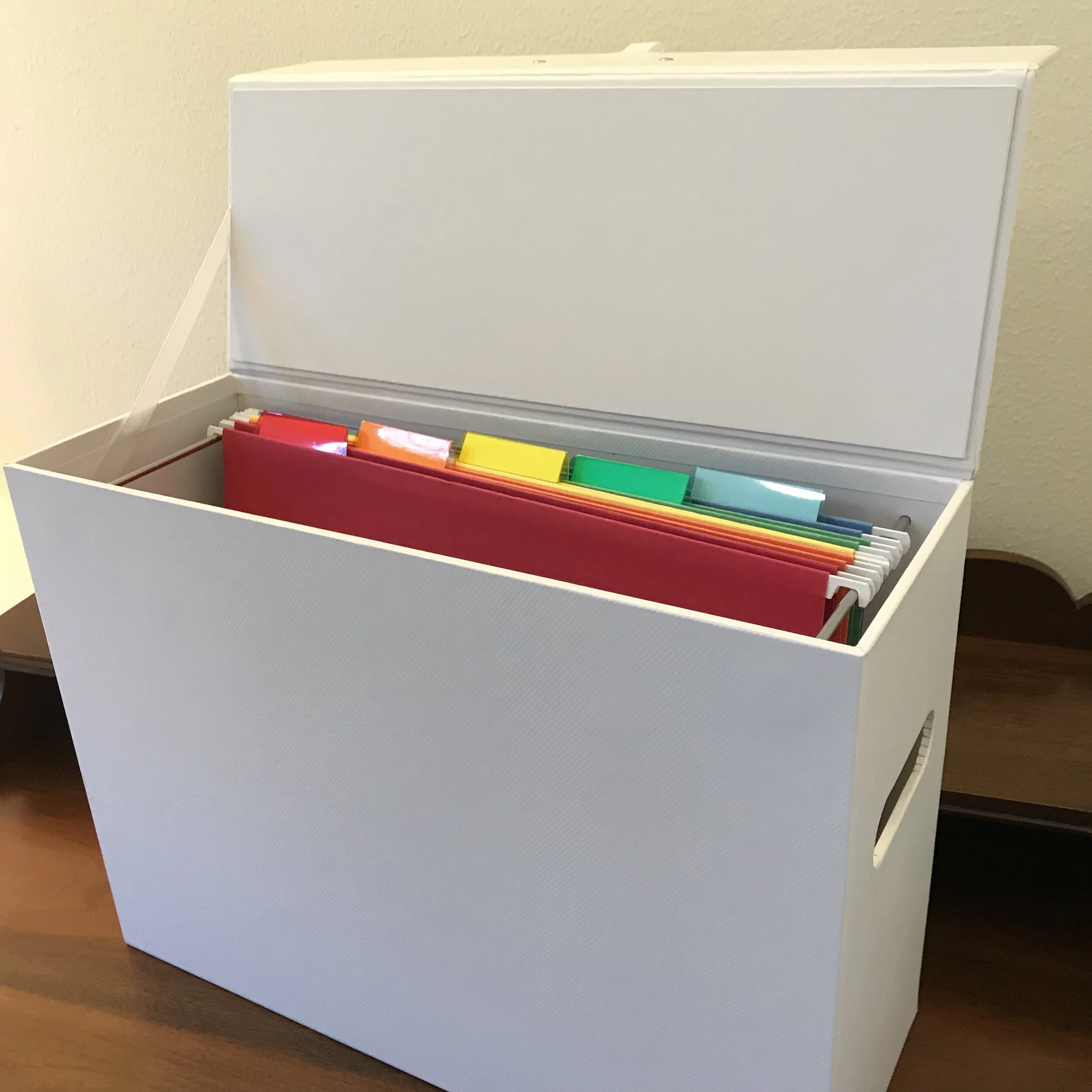Guest Blog: Managing Your Kids’ Distance Learning Worksheets
/
Laura Sinclair is a professional home organizer and certified KonMari Consultant in Houston, TX. As the owner of Flourish Organizing, she helps people to declutter and reorganize using Marie Kondo’s method of tidying. She especially loves helping people create simple organizing systems for their papers. Find out more at https://flourishorganizing.com/about.html
As we prepare to go back to school, many students will be distance learning. Begin by arranging desks and work spaces for each member of the family. Then, think about how you will handle school papers. Young students will need parents to help with things like printing worksheets and turning in assignments online. If you’ve got multiple children, this further complicates the task. As a parent, how will you manage all of the handouts and worksheets for your elementary-aged child?
Inboxes:
First, focus on one child and think about the categories of worksheets that you will have to manage. Likely, there will be papers that you give to your child for the day and then papers that they give back to you after school. Set up a physical place for this. You need an inbox and an outbox (or an inbox for you and an inbox for your child). For example, each morning, you place printed worksheets in your child’s inbox. At the end of the school day, your child returns all completed work into your inbox. If you have multiple children, you will probably need an inbox and outbox for each. This inbox should also be separate from your personal paper inbox so that you don’t mix up your child’s papers with the mail and such.
Once you get papers back from your young student, you will have to sort through them:
1. Scan and turn in any papers that the teacher has requested.
2. Store the completed worksheets - both those that were turned in online and those that were not. Hang on to them for a few weeks just in case the teacher asks for something or your child needs it again. Every once in a while, you can probably recycle the whole lot.
Storage:
There are a variety of ways that you can store their completed worksheets. The easiest is to just keep them in chronological order. You can designate a specific drawer for each child’s completed papers. At the end of the day, simply open the drawer and drop all of today’s completed papers on top of the pile. The benefits of this method are that they are out of sight, they are all in one spot for easy access, and they are generally in order by date. Another option is to have a paper tray, basket, or tub for this. A third option is to use a binder to keep all of the recent papers for each child. Make sure to have a hole-punch close by to make it easy. If you’re using a binder, I would recommend putting all new papers at the front and keeping them in chronological order. Don’t make things unnecessarily complicated; keep it as simple as possible.
Extra Worksheets:
At this point, you have turned in work online and temporarily stored completed papers. What’s left? There may be worksheets that they didn’t get to today or that were only partially completed. Decide what you will do with those papers; give them a home. If they are far and few between, you could simply put them back into your child’s inbox with tomorrow’s new printouts. If they stack up quickly, you could create a paper tray, drawer, or spot at your child’s workspace for these unused worksheets. Your child would have to go through the stack if their teacher asks for an older worksheet that they hadn’t yet completed.
Again, keep things as simple as possible; don’t complicate things unnecessarily. However, if you have enough extra worksheets that they need to be separated by subject, then you can add another layer of organization. Create a set of drawers or paper storage trays that are labeled with each subject, such as math, reading, and science. If your child needs an older worksheet that was not completed for art class, then they could find that paper in the “art tray.” At the end of each day, your child would have to put away incomplete worksheets in each subject spot in addition to putting completed work in your inbox. This is an extra step. Model and help them do this until they can manage on their own.
Everyone’s needs are different. This is just one model for paper flow. Take some time to think about what categories of papers you will have for your child and then give each a “home”. Remember: No loose papers! Every paper belongs somewhere, even if it’s a pretty tray. Then train your kids to put away all of their papers each day. Having simple paper routines can go a long way to keeping your child’s workspaces decluttered and feeling a bit more in control.
If you need more support, consider hiring a professional organizer or a one-on-one virtual organizing coach.




